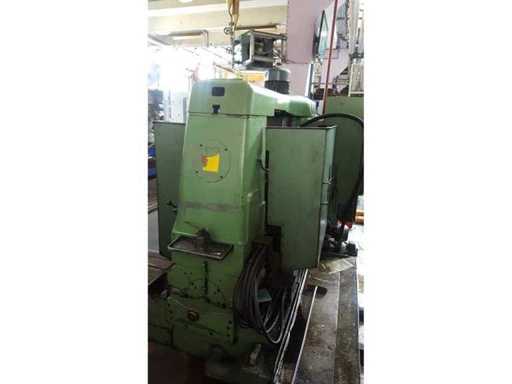Hobbing Machines
Hobbing machines for all areas of gear processing
Manufacturing of all types of gears
Hobbing machines, also known as hobbers, are specialised machines used for the production of gears. Using the machine's various settings, the number of teeth, desired helix angle and profile correction can be set up. The hobber is made out of single or multiple-gear worms to build a worm gear unit with the workpiece. The rotary cutting motion occurs due to the turning of the milling tool. Additionally, the milling tool drives alongside the workpiece to generate the tooth space. The milling axis and turning of the workpiece can produce spur, as well as helical, gears.
Manufacture of gears of all types and forms
Products for various industries
High accuracy
Quality Great offers Personalized
The versatility of a hobbing machine allows for the production of desired gears and splines with the highest levels of precision. As the process of removing metal can wear out the milling tool, this tool is continually shifted. This is how new teeth are produced. When the work tool is completely worn out, it is newly sharpened using a specialised milling machine.
From the idea to implementation
Hobbing machines were conceived in 1856 by Christian Schiele. During this time, it was not possible to make this process automatic. In 1887, George Bernard Grant, an inventor that was mainly involved in the development of calculators, registered a patent for the first hobbing machine. This breakthrough was a universal hobbing machine by Hermann Pfauter, from Chemnitzer, the founder of PFAUTER.
Hobbing machine in use
Products for a variety of industrial sectors
Outer spur and helical gears, as well as inner gears, can be produced in a variety of sizes using a hobber. They are also used for the manufacturing of bevel gears, crown wheels, palloid and hypoid gearing, Gleason and Klingelnberg toothed gear tooth systems, screw augers and wheels. The products are mainly used in the automobile industry, agricultural technology, machine building industry and plant construction. The desired width of the teeth and helix angle is achievable through the simple adjustment of tools. Chippings are a result of the large amounts of cutting that occurs without a back stroke.
The process results in high levels of precision. For particularly demanding processes, workpieces are subsequently hardened, and ground or honed during the finishing process.
Suppliers of hobbing machines
Several companies have specialised in the manufacturing of hobbing machines. Some of the most recommended suppliers include LORENZ, PFAUTER and KLINGELNBERG.
